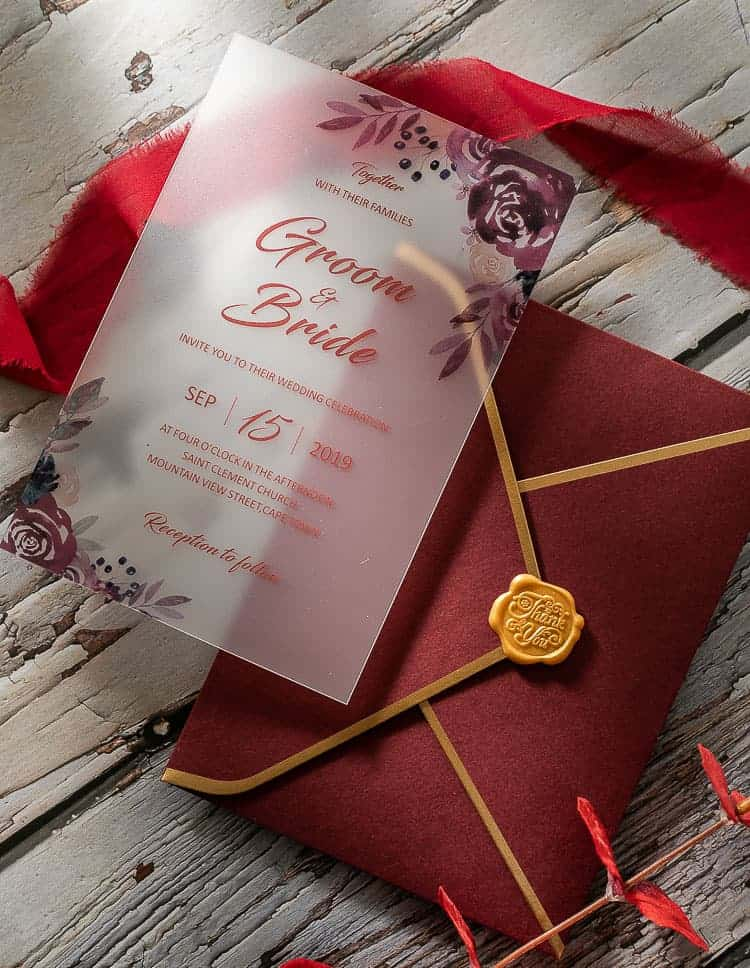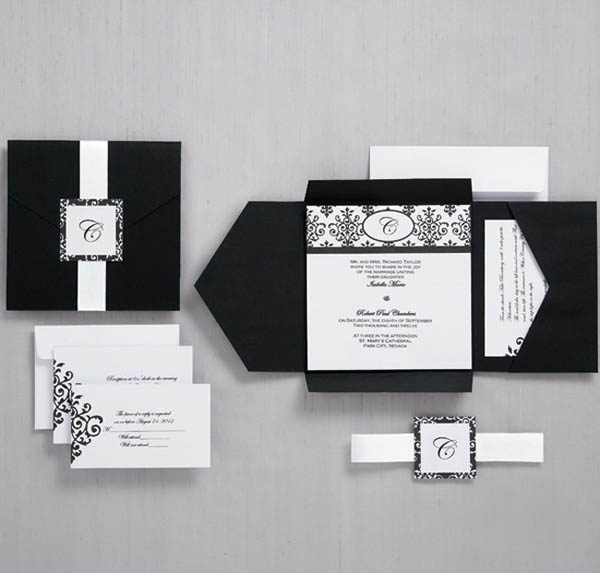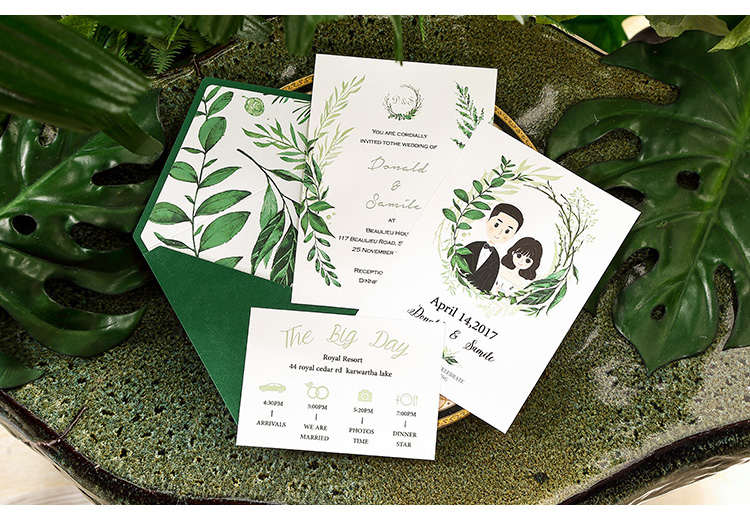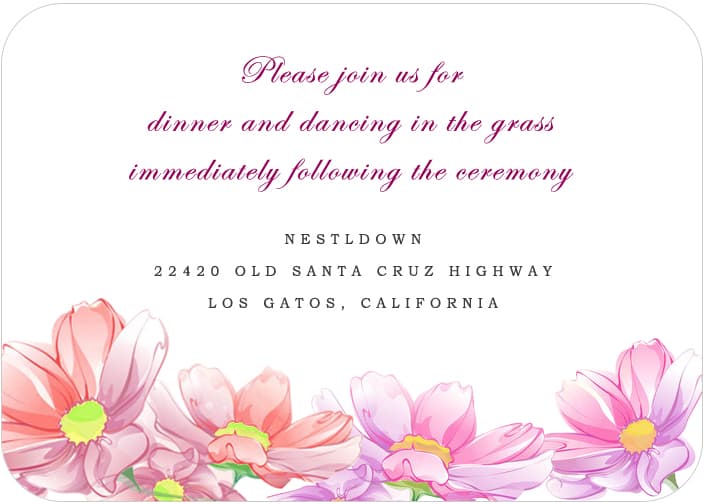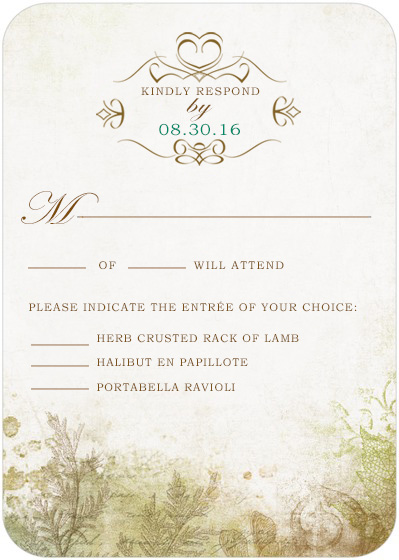There is countless ways to invite guests to your celebration, wording proper on your wedding invitations is pivotal to reflect the style of the occasion and the changing times.
What you write on your unique wedding invitations will set the tone for your big day. And also, the proper wording relays important information to guests.
You can do whatever makes good etiquette sense and makes you feel good, however, there are certain customary elements you should include.
For example, always include a line dedicated to who is hosting the celebration.
Whether you’re paying for the wedding yourselves or are having a same-sex wedding and therefore have two families that are hosting, you should feel free to select wording that works for your unique situation.
Each part of your wedding invitation will depict your specific nuptials, so there’s always wiggle room.
Whatever your wedding style is, a casual, laid-back beach wedding, or a religious one stepped in tradition, there are ways to tell guests the information they need prior to attending the celebration party.
How to word your invitations? What details should be included on your unique wedding ivitations?
Before wording the invitations, we should decide whether or not to feature a line on your general invitation or adding a separate reception card to your invitation suite.
You should consider this early on, because they’ll impact the ultimate cost of your invites suite.
To help you make sense of it all, we’ve compiled your wedding invitation wording checklist so you can make sure all the needed information is conveied to all your guests.
01 Host Line
Start with the names of those issuing the invitation, which would traditionally be the bride’s parents.
Evolving family structures and financial dynamics often make this the trickiest part of the process, just follow the format that best fits your situation.
02 Request Line
Two phrases are the most traditional; one indicates the ceremony will be in a house of worship, the other that it will not.
At a Place of Worship: “Request the honor of your presence…” is the proper way to word the request line.
Meanwhile at an informal ceremony, write: “Would be delighted by your presence at the marriage of their children…”
Meanwhile, at an informal reception, write, “Invite you to join them at the wedding reception of…” to request the guest’s presence.
Informal wording is becoming very common.
Just be sure that whatever phrasing you choose indicates that guests are being invited to a wedding ceremony or the reception only.
03 Bride and Groom Lines
Names of the bridal couple are setted off on separate lines, because they are the stars of the invitations.
The preposition linking them goes on its own line: traditional American formatting uses the word “to;” some Jewish formats use the word “and.”
For a traditional wedding, if the bride’s last name is the same as her parents’ above, it is typically not repeated. No courtesy title (such as Miss or Ms.) is used.
For a contemporary wedding, if the couple or both sets of parents are to host, treat the names equally.
04 Date and Time Format
Don’t worry about using a.m. or p.m., or a phrase such as “in the evening,” unless the wedding will be held at 8, 9, or 10 o’clock.
The year is traditionally omitted as well, but it is sometimes included for the invitation’s keepsake value.
For a traditional wedding, spell out numbers and capitalize proper nouns only;
You can begin the line with the preposition “on” if you’d like.
For a contemporary wedding, though using numerals is a more modern practice, it is not necessarily more casual.
05 Location
It’s traditional not to include street addresses of houses of worship or well-known locations, but this is less common lately.
Commas are not used at the ends of lines, and the state is always spelled out.
For example: traditional and religious weddings, write, like this ‘Saint Paul’s Lutheran Church, Walkersville, Maryland.’ For a contemporary affair, if you are using a street address, numerals are acceptable but no ZIP code is needed; this is not for mailing.
06 Reception Line or Card
If the ceremony and reception are in the same space, they can be on a single invitation.
If the reception is held elsewhere, a separate reception card might be helpful.
It is no longer considered acceptable to invite some people only to the ceremony.
07 R.S.V.P. Line or Reply Card
For a R.S.V.P. line on the invitation. it goes in the lower left corner; you can also include mailing address, phone number, email address, or website.
If you’re using a separate card, a traditional fill-in-the-blank version provides the first letter of Mr. or Mrs.; or try a single line, such as “Please let us know whether you will join us,” with space for writing.
Brides today generally include reply card, envelope, and stamp to encourage guests to respond to their invitation in a timely manner, even though traditional etiquette doesn’t actually call for them. It’s not rude to omit these, but it might be risky.
08 Special Details on the Wedding Invitation
Anything important you want your guest to know.
For example dress code, if you want to stress the importance of the style of dress—black tie, for instance, or casual attire—place that information in the lower right corner, or on the reception card.
If your event won’t include a full meal, it’s courteous to inform your guests. Use phrasing such as, “and afterward for cocktails,” instead of the classic “at the reception.”
The only thing that should not be included anywhere on your invitation—not even as an insert—is your registry information.
I think you can add your registry information on your save the date card, or your wedding website.
Get your unique wedding invitations from Happyinvitation, we will do the wording job for you.





